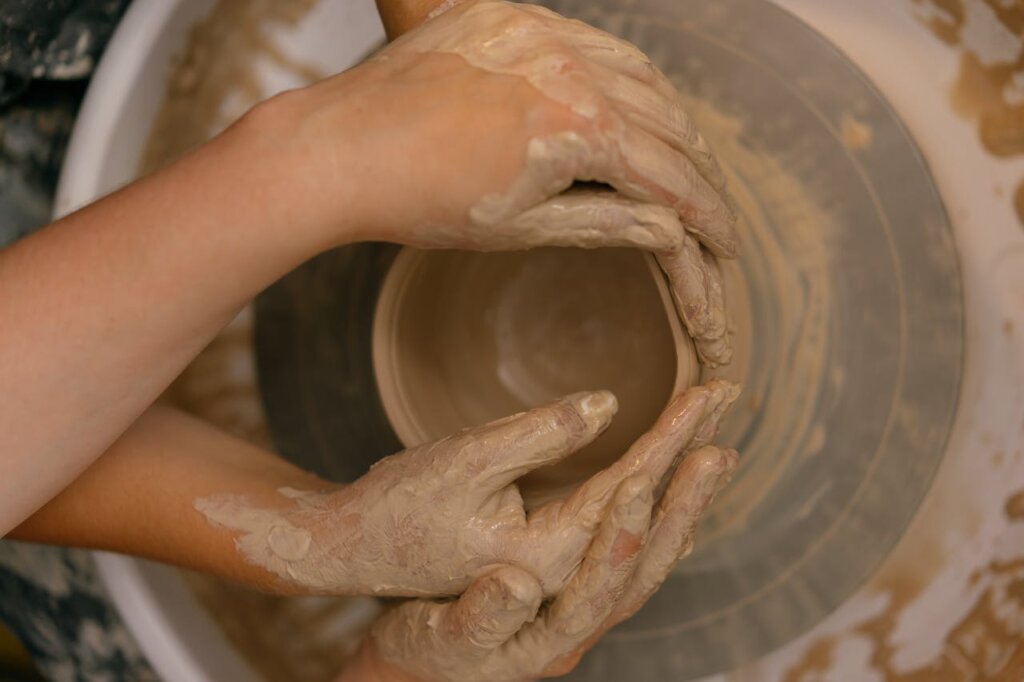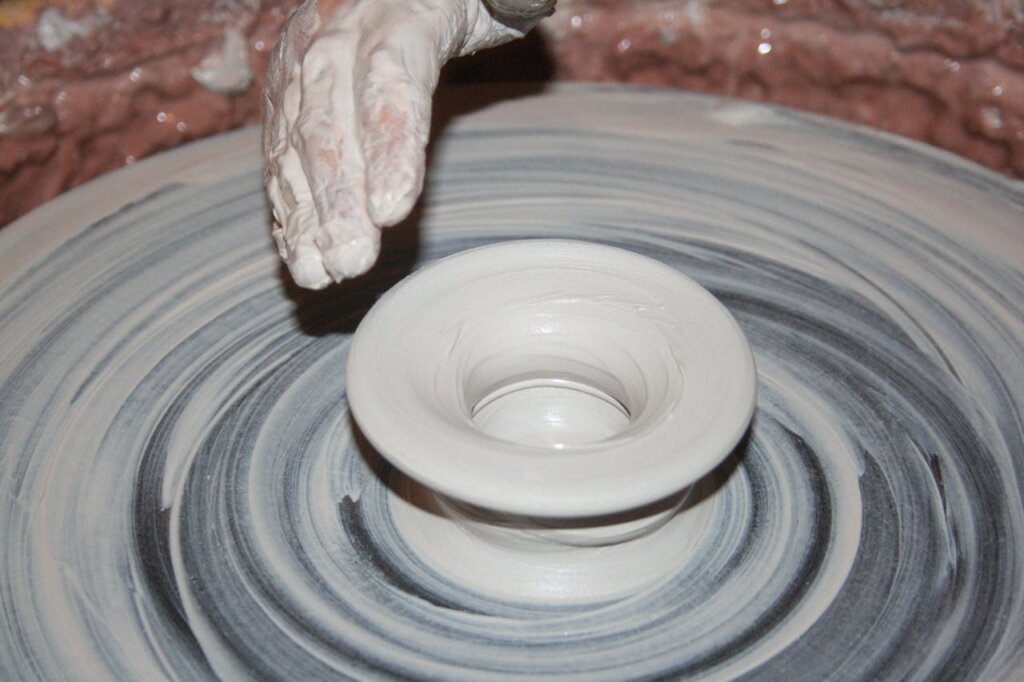Introduction
Pottery is a versatile and fulfilling craft that can be approached in various ways, with two primary methods being wheel throwing and hand-building. Each method offers unique advantages and challenges, making the choice between the two an important decision for beginners. This article explores the pros and cons of using a pottery wheel versus hand-building techniques, helping you decide which approach best suits your interests and skill level.
Understanding Pottery Wheel Throwing
Wheel throwing is a technique where clay is shaped on a rotating wheel. This method is often associated with creating symmetrical and rounded forms, such as bowls, vases, and mugs.
Pros of Pottery Wheel Throwing:
Speed and Efficiency
- Quick Production: Once you master the basics, wheel throwing allows for rapid creation of uniform pieces, making it ideal for producing multiple items quickly.
- Consistency: The wheel helps in creating consistent and symmetrical shapes, which is useful for functional ware like sets of dishes or cups.
Smooth and Professional Finish
- Refined Look: The spinning motion of the wheel allows for smoother surfaces and cleaner lines, giving your pieces a professional finish.
- Decoration Potential: The wheel’s rotation makes it easier to apply glazes and decorative elements evenly.
Skill Development
- Technical Skills: Wheel throwing requires and develops a high degree of hand-eye coordination and control, enhancing overall pottery skills.
- Creative Challenges: The wheel offers unique challenges that can stimulate creativity and technical prowess.
Cons of Pottery Wheel Throwing:
Equipment Investment
- Cost: A quality pottery wheel can be a significant investment, potentially deterring some beginners.
- Space: Wheel throwing requires dedicated space for the wheel and additional equipment, such as splash pans and stools.
Learning Curve
- Complexity: Mastering wheel throwing can be challenging and time-consuming, requiring patience and practice.
- Initial Frustration: Beginners might find it frustrating to center the clay and achieve desired shapes initially.

Understanding Hand-Building Techniques
Hand-building involves shaping clay using hands and simple tools without the aid of a wheel. Techniques include pinch pots, coil building, and slab construction.
Pros of Hand-Building:
Accessibility
- Low Cost: Hand-building requires minimal equipment, making it a cost-effective option for beginners.
- Minimal Space: This method can be done almost anywhere, requiring only a flat surface and basic tools.
Creative Freedom
- Versatility: Hand-building offers more flexibility in shapes and sizes, allowing for organic and asymmetrical forms that are harder to achieve on a wheel.
- Personal Expression: The tactile nature of hand-building lets potters infuse personal touches and textures into their work, enhancing creativity.
Easier Learning Curve
- Beginner-Friendly: Many hand-building techniques are straightforward and can be learned quickly, providing a sense of accomplishment early on.
- Less Frustration: The slower pace of hand-building allows for more control and less initial frustration compared to wheel throwing.
Cons of Hand-Building:
Time-Consuming
- Slower Process: Hand-building can be slower than wheel throwing, especially for larger pieces or when producing multiple items.
- Labor-Intensive: Shaping clay by hand requires more physical effort and can be tiring over extended periods.
Surface Finish
- Less Smooth: Achieving a smooth and refined finish can be more challenging with hand-building techniques.
- Consistency Issues: Creating uniform pieces can be difficult, which might be a drawback for functional sets or items requiring precision.

Practical Tips for Choosing Your Method
When deciding between wheel throwing and hand-building, consider the following practical tips to guide your choice:
Assess Your Goals
- Functional vs. Artistic: Determine whether you are more interested in creating functional ware or exploring artistic, sculptural forms.
- Speed vs. Creativity: Decide if you prioritize quick production and consistency or value creative freedom and unique designs.
Consider Your Resources
- Budget: Evaluate your budget for equipment and materials. Hand-building is more affordable, while wheel throwing requires a significant initial investment.
- Space: Assess the space you have available for pottery. Hand-building is more adaptable to small spaces, while a wheel requires a dedicated area.
Try Both Methods
- Workshops and Classes: Enroll in pottery classes or workshops that offer both wheel throwing and hand-building. This hands-on experience can help you understand which method you prefer.
- Experiment at Home: If possible, experiment with both methods at home using basic hand-building tools and renting or borrowing a wheel to get a feel for each technique.

Conclusion
Both pottery wheel throwing and hand-building offer unique advantages and challenges for beginners. Wheel throwing is ideal for those seeking speed, efficiency, and a professional finish, while hand-building offers accessibility, creative freedom, and a more manageable learning curve. Ultimately, the best method for you will depend on your goals, resources, and personal preferences. Exploring both techniques can provide a well-rounded pottery experience and help you develop a diverse skill set.
We hope this guide helps you choose the right pottery method for your needs. Share your experiences and preferences in the comments below. For a range of pottery tools and equipment, visit our shop and start your creative journey today!

